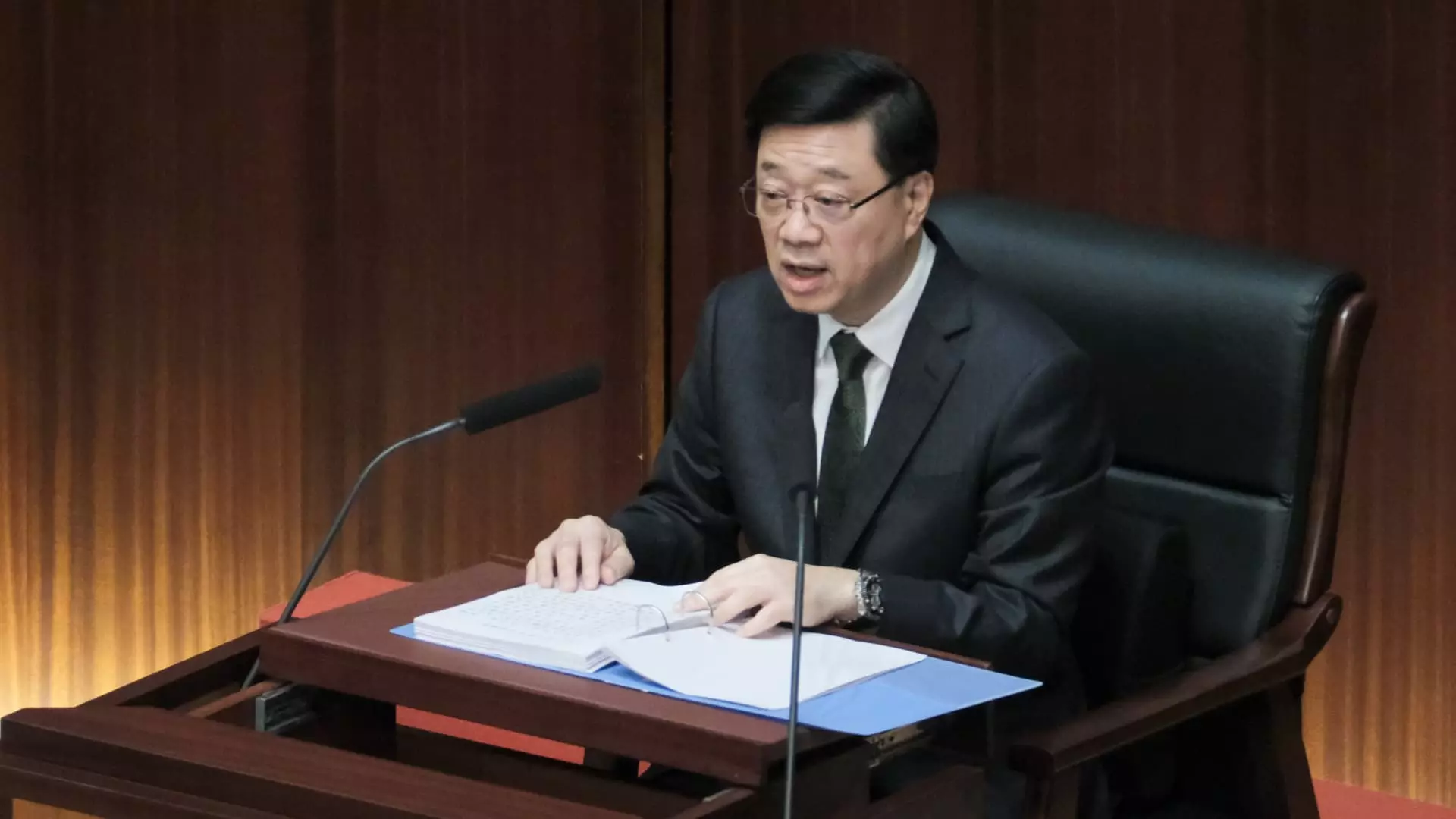In recent years, the issue of housing affordability in Hong Kong has escalated into a pressing public concern, drawing widespread attention from both the government and its citizens. Chief Executive John Lee’s recent announcement during his annual policy address underscores the urgent need for solutions to a problem that has persisted for over a decade, making Hong Kong the least affordable city globally according to the 2024 Demographia International Housing Affordability report. With rising living costs combined with stagnant wages, particularly among the youth, swift measures are essential to alleviate the pressures of this crisis and ensure that the younger demographic can secure a home in an increasingly competitive market.
One of the central tenets of Lee’s strategy is to create a more accessible route to subsidized housing for individuals under 40 years old. The proposal entails allocating an additional ballot number for this age group within the Home Ownership Scheme, thereby enhancing their chances to obtain subsidized flats. This targeted approach recognizes the unique challenges facing younger generations, who are often caught in a cycle of high rents and financial constraints, thwarting their ability to enter the property market.
Additionally, expanding the quota for the “White Form Secondary Market Scheme” by 1,500 units specifically for applicants under 40 signals a commitment to ensuring that younger individuals are prioritized. In a city marked by inadequate affordable housing options, such initiatives are vital yet represent just one facet of a multifaceted solution that must also encompass broader systemic changes in the housing landscape.
Reforming Subdivided Flats: A Response to Living Conditions
The existence of over 100,000 subdivided flats in Hong Kong highlights the dire living conditions that many residents endure. These small, often poorly constructed units have been criticized for lacking basic amenities and posing health risks to occupants. In a bold move, the Hong Kong government plans to reform these substandard living spaces into “Basic Housing Units,” which will adhere to new safety and sizing regulations. By ensuring that these units boast essential features such as proper windows and bathrooms, the government aims to improve the quality of life for residents currently living in inadequate conditions.
While this initiative is commendable, it raises questions about the adequacy and enforceability of regulatory measures to guarantee that such transformations occur effectively and sustainably. The danger remains that without rigorous oversight, these reforms may merely mask underlying issues rather than address them at their core.
Long-term Vision: Expanding Public Housing Supply
During his address, Lee reiterated the government’s commitment to increasing public housing availability, aiming to complete around 30,000 new units by 2027-2028. While the proposed reduction of wait times from 5.5 years to 4.5 years represents a step in the right direction, the efficacy of this plan will depend on its execution and whether actual housing developments align with this ambitious goal.
Moreover, the proposed additions to public housing must not only offer quantity but also promote quality. As the government allocates funding and resources, it’s imperative that the focus remains on constructing liveable, sustainable environments that foster community well-being. Otherwise, residents may find themselves waiting for a solution that fails to provide the conditions promised.
Lee’s third policy address demonstrated a noticeable shift in focus compared to previous iterations that addressed national security and pandemic recovery. This new emphasis on enhancing the overall livelihood of residents signals a refreshing approach aimed at addressing the direct needs of the populace. The importance of prioritizing public welfare and making tangible progress in resolving the housing crisis cannot be overstated.
As Hong Kong continues to navigate complex socio-economic challenges, maintaining transparency and responsiveness to the concerns of residents will be critical. Ensuring that the voices of young people are heard, and their needs adequately met, could serve as a cornerstone for revitalizing the city’s housing policies and fostering a more equitable urban environment.
While John Lee’s proposals represent constructive steps towards ameliorating housing affordability for the youth of Hong Kong, there remains much work to be done. The implementation of these policies, coupled with a sustained commitment to tackling the systemic issues that underlie the housing crisis, will determine whether the city can forge a path toward a more stable and accessible housing future for all residents.

